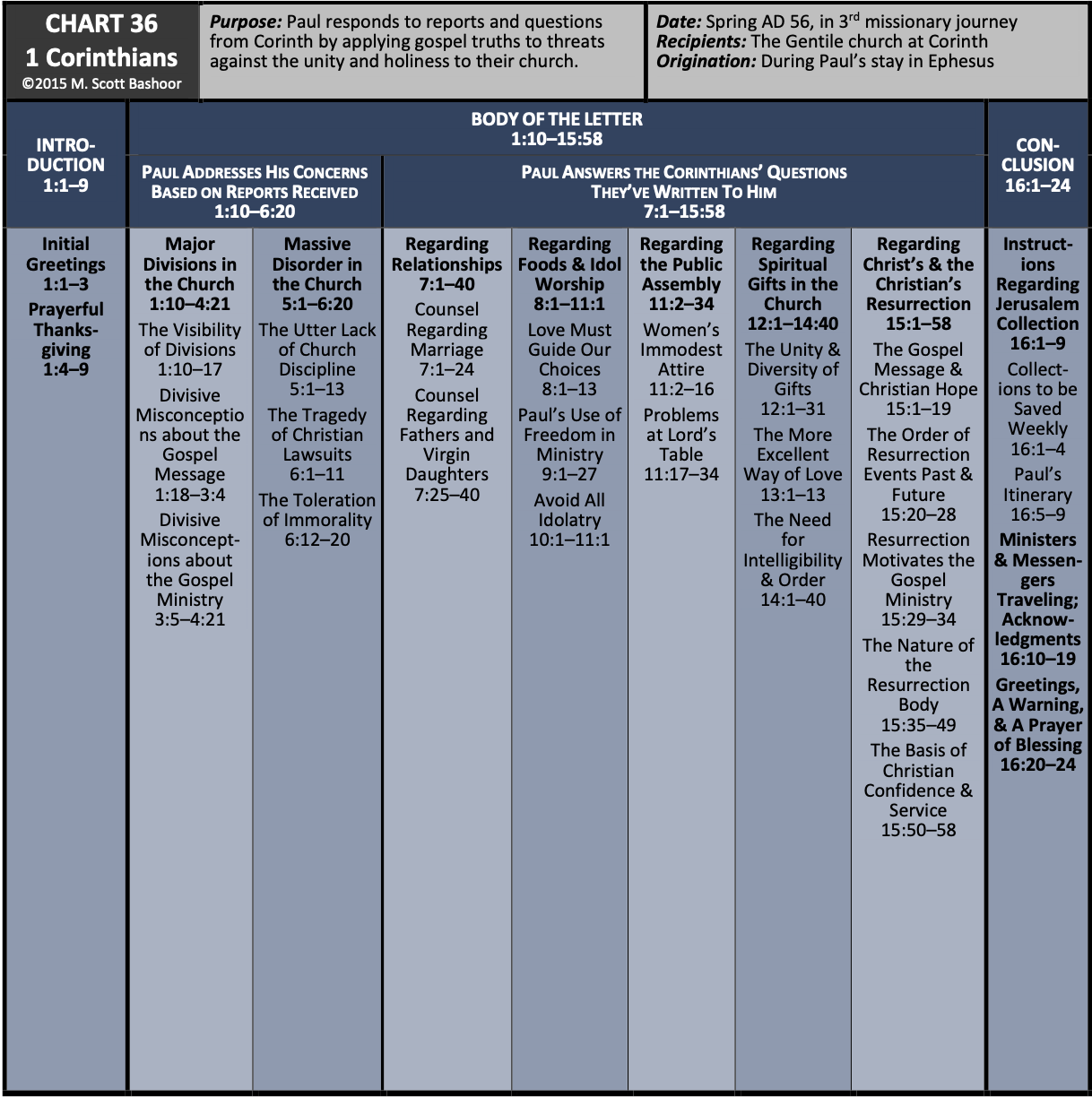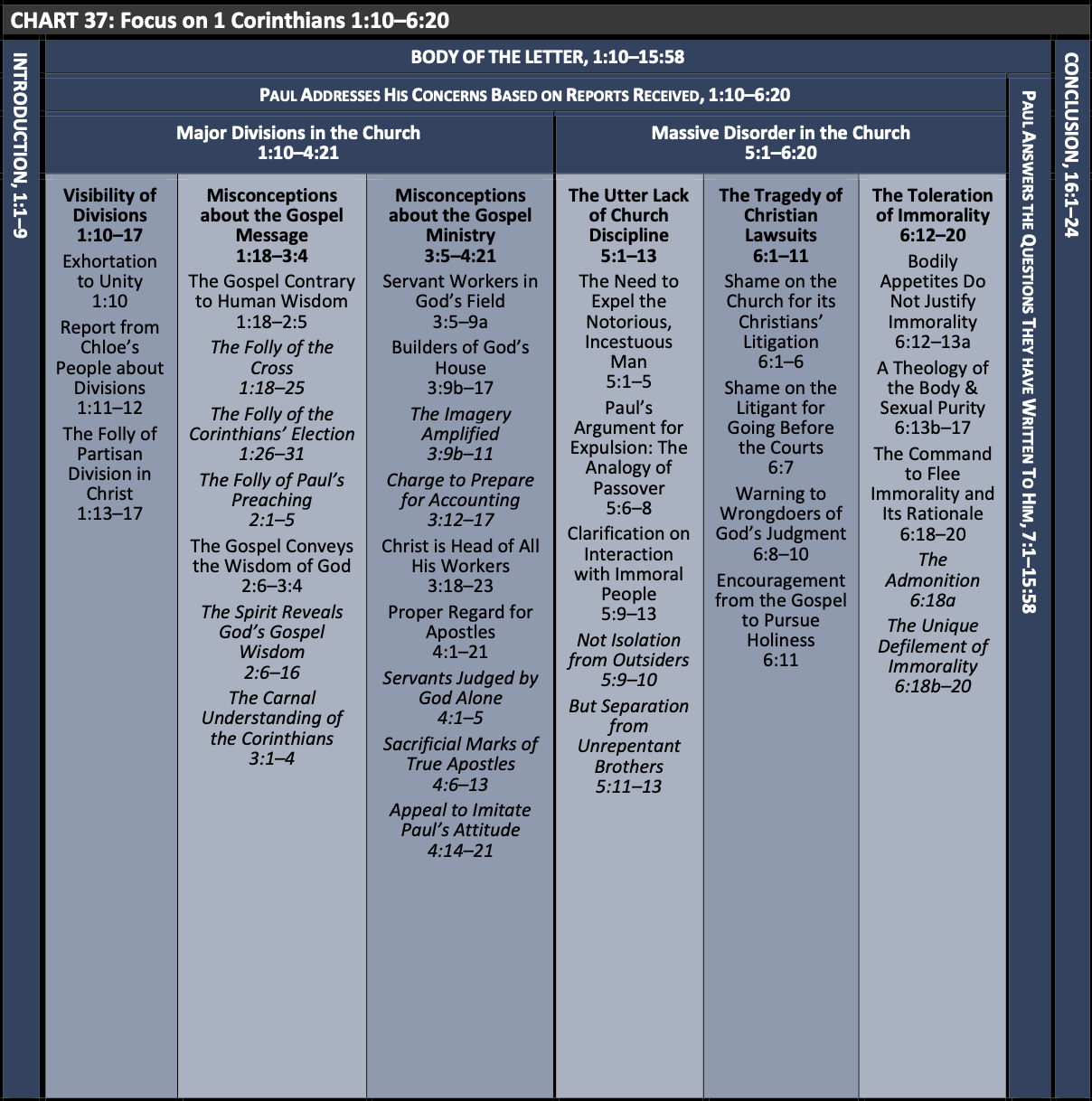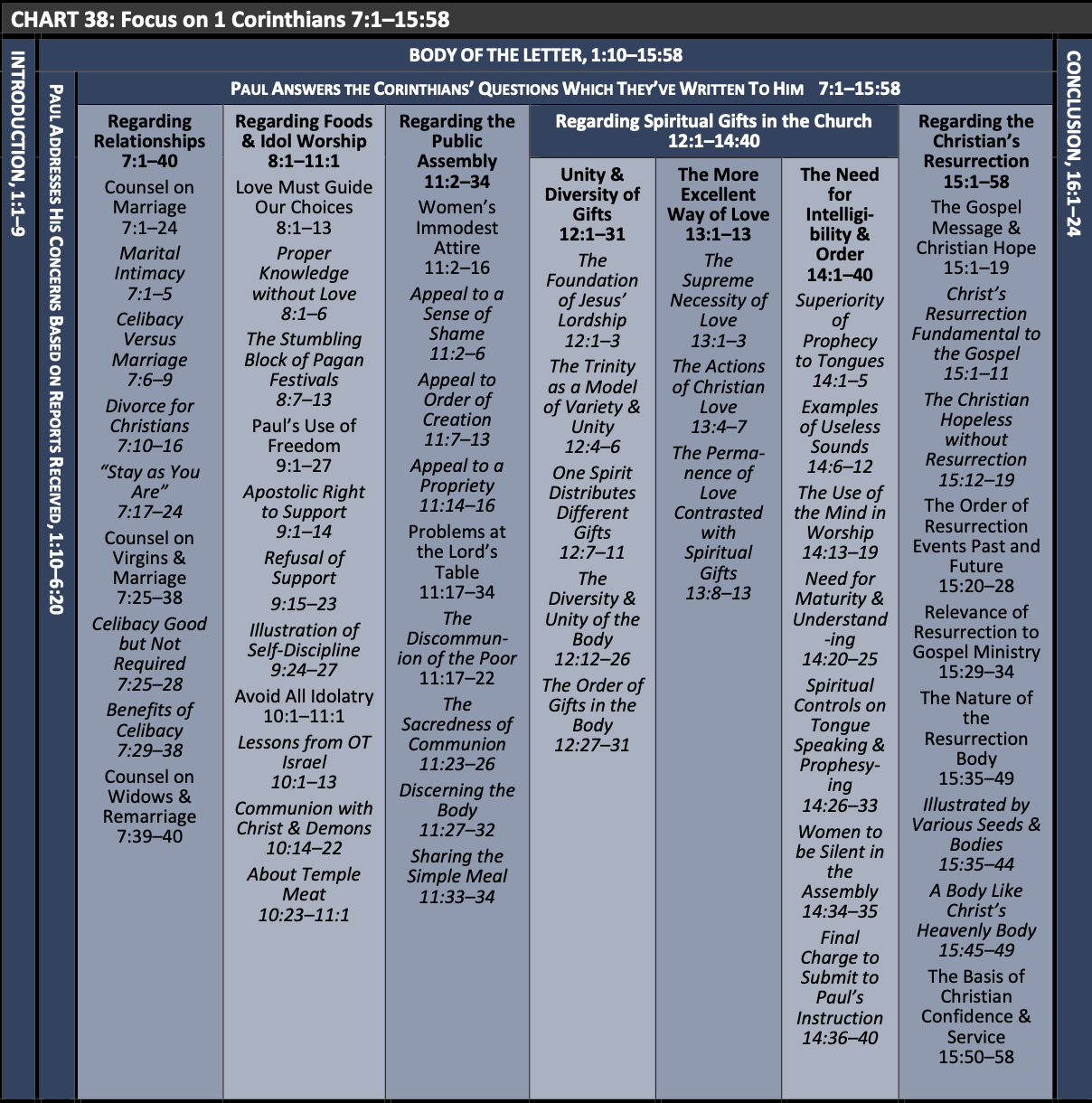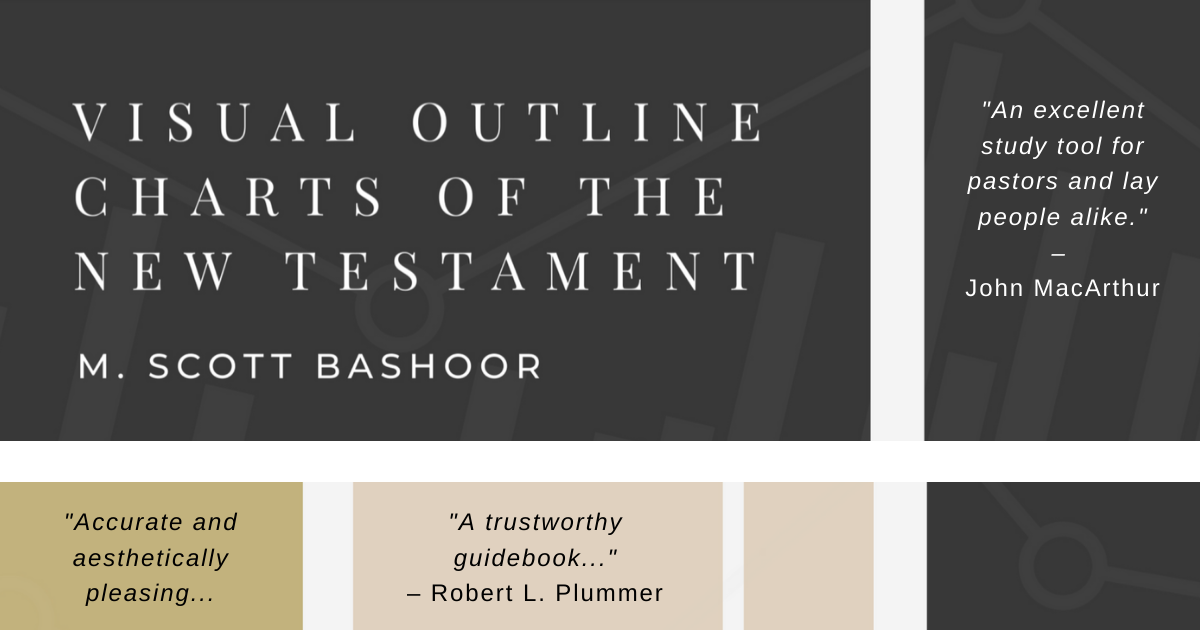One of the most foundational resources for the study of any biblical book or passage is a trusty outline. But roman numerals, indentations, and bullet points can become unwieldy. Through changes in the textbook industry and the proliferation of presentation tools, many of us have been trained to learn in charts and tables.
Visual learners will be delighted to open up Scott Bashoor’s work Visual Outline Charts of the New Testament (SCS Press, 2020).
In the Introduction, Bashoor writes:
Visual Outline Charts of the New Testament (VOCNT) presents single page displays of the structure and content of each book of the New Testament. These charts are intended for pastors, Bible teachers, college and seminary students, and studious Christian readers. Each charts uses shades of color and font changes to guide the eye through the major sections and sub-section of NT Scripture. While these charts are no replacement for commentaries or other study tools, I hope that they will prove useful for anyone wishing to enhance their understanding of the NT. (1)
VOCNT provides a brief introduction to each section and book of the NT and then presents outline charts in a sort of “drop-down menu” fashion. Let’s take 1 Corinthians as an example.
Introducing the Corinthian Epistles more broadly, Bashoor writes,
Many new Christians (and older ones as well) do not understand that all individual passages are part of a larger flow of thought and argument. Click To TweetPaul’s two letters to the Corinthians, written in AD 56, address dire concerns he had with a large church with larger problems. This troubled church received more correspondence from Paul than any other, comprising 30% of his inspired writings.
Occasioning this correspondence is conflict, misunderstanding, and carnality on the part of the Corinthian saints. Historically, the Corinthian church was founded by the Apostle around AD 50. He spent an unprecedented 18 months there, laboring to establish the church before cycling back East. Years later Paul received troubling reports, and in early AD 56 he received a letter with questions from the church itself. It appears that Paul wrote two other letters to them (1 Cor 5:9–13; 2 Cor 2:4) before and between the two inspired letters in the NT. Moreover, he made a painful visit to confront problems head-on before writing 2 Corinthians (2 Cor 2:1). (48)
Bashoor then provides an overview of 1 Corinthians in particular:
In First Corinthians Paul responds to reports and questions from Corinth by applying gospel truths to problems threatening their unity and holiness. His approach is different from most of his letters in that he does not frontload this epistle with doctrinal teaching followed by prolonged, practical application. Instead, he alternates between doctrinal and practical discussions, perhaps because his immature members could not yet profit as much from extended exposition. (48)
1 CORINTHIANS OVERVIEW

As the exegete progresses through devotional reading, sermon preparation, or discourse analysis, she can go deeper into each major section.
The body of 1 Corinthians is here broken into two basic halves:
First Corinthians opens with Paul’s introductory greetings of grace. In the first half of the letter, he addresses his concerns based on reports about problems in Corinth. Throughout the first six chapters, he tackles rather visible divisions in the church which were based largely on misconceptions about the gospel’s public reception and solid Christian ministry. Moreover, Paul addresses the church’s massive disorder evidenced in their lack of basic church discipline, their shameful dragging of one another into court, and their toleration of gross immorality. (48)
1 CORINTHIANS 1:10-6:20

In the latter half of the letter, from chapters seven through fifteen, Paul answers questions the Corinthians had posed about marriage, about food purchased from pagan temples, and issues in their public worship. He also addresses the use of spiritual gifts, and, last but not least, the nature of Christian resurrection. In the letter’s conclusion, he provides instructions about an important collection for the Jerusalem church and informs them of his plans to visit soon. (48)
1 CORINTHIANS 7:1-15:58

As friends of Exegetical Tools will know well,
Learning to read and understand the Bible is a key part of discipleship. Many new Christians (and older ones as well) do not understand that all individual passages are part of a larger flow of thought and argument. (3)
Students of Scripture care about context. For a handy guide to the overall structure and divisions of any New Testament book, consider picking up Visual Outline Charts of the New Testament.



